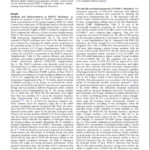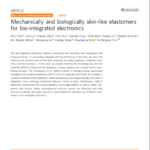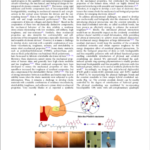Biological Discoveries: Paper, Mechanically and biologically skin-like elastomers for bio-integrated electronics
This paper describes a biomaterial that was created to mimic the function and properties of human skin. PSeD-U elastomers were created by designing a unique covalent hybrid crosslinking structure with hydrogen bonds that increase the toughness and strength of the material. One of the properties that was measured was tear resistance. The PSeD-U20-12h elastomer was found to be able to stretch up to 3.5 times and had a high tearing energy which indicates the energy dissipation of hydrogen bonds. The degradation rate of this material was also much slower, again indicating the effects of the strong hydrogen bond. The discovery of this material is important for applications such as pressure sensors in human/machine interactions, wearable electronics, or medical implants.
Learn about our two Decals!
 Click here to find out more about our Fall Bioinspired Design Decal and our Spring Bioinspired Design in Action Decal – ALL MAJORS are welcome.
Click here to find out more about our Fall Bioinspired Design Decal and our Spring Bioinspired Design in Action Decal – ALL MAJORS are welcome.Berkeley BioDesign Community
 Click here to learn about the BioD: Bio-Inspired Design @ Berkeley student organization or here to signup for more info.
Click here to learn about the BioD: Bio-Inspired Design @ Berkeley student organization or here to signup for more info.Search
Student Login






I imagine that the neurological circuits underlying these processes are governed by both 2d spacing maps with their brains as…
to reduce the impact of car accidents, it may be possible to study the force diverting physics of cockroaches to…
you see this type of head-bobbing stability in many avian creatures related to pigeons like chickens. the head ability to…
not like they taught horses how to run! this is an example of convergent evolution where both sea creatures and…
The brain functions in a similar way with neuronal connections. our brains are able to utilize the multiplicity of connections…